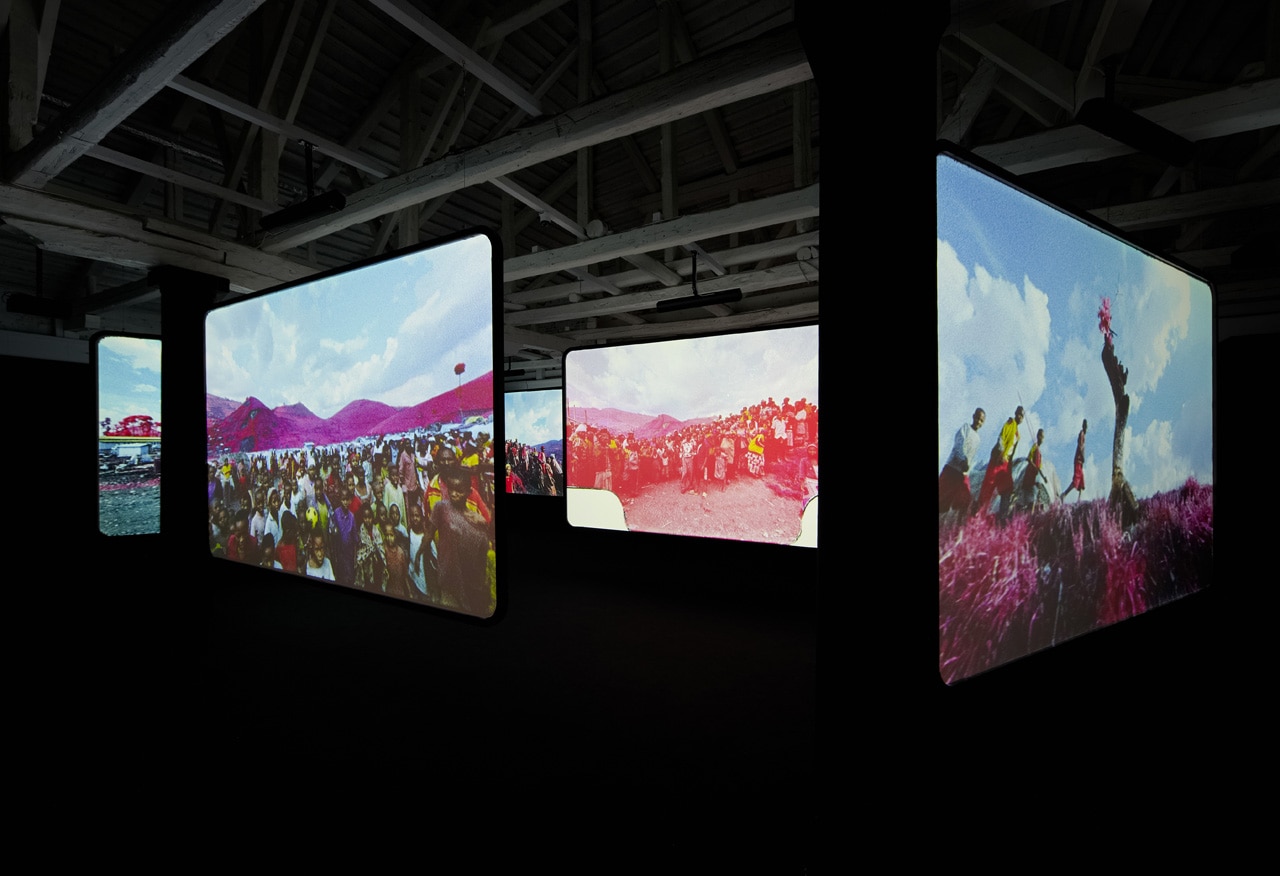| Richard Mosse, Platon, North Kivu, 2012 |
These photographs and the
six screen installation (not on exhibition at the Photographers’ Gallery) do
everything that photography is meant to do. On display as one of four
photography exhibitions shortlisted for the Deutsche Börse Photography Prize,
2014, Richard Mosse’s Enclave is the
obvious winner. These complex and very beautiful photographs fulfill all
expectations of photography when they push its limits formally, conceptually,
aesthetically.
The sampling of images on
display at The Photographers’ Gallery represent the larger exhibition at the
Irish Pavillion in the Venice 2013 Biennale. The series comprises landscapes
and single subject portraits that are formally provocative, aesthetically
exciting, political, violent and always beautiful. The most striking thing
about the images is their use of a discontinued Kodak stock surveillance film,
invented for American Military reconnaissance missions in World War II, and used
as for camouflage detection. The images are dominated by magenta, cyan,
lavender, crimson and hot pink. The uniqueness of the military film stock is
its register of an invisible spectrum of infrared light, turning green
landscape into an array of glaring colours.
| Richard Mosse, Poison Glen, 2012 |
A river runs through a valleyed
landscape in Platon (2012), a soft
mist hovers over distant hills of the eastern Democratic Republic of Congo
where 5.4 million people have died of war related causes since 1998. The hills
are bathed in hot pink, the river running through the valley is fluorescent
blue. The result is that this and other of Mosse’s landscapes appear cancerous,
we notice that life is extinct, that something deadly has swept through an
otherwise idyllic world.
| Richard Mosse, Madonna and Child, 2012 |
The land is known to be rich
in rare earth minerals, like gold and cassiterite. It is not just fertile, it
is laced with wealth, power, and thus an open invitation to corruption,
anarchy, and eventually, war. Mines are controlled by rebels who proudly
feature in Mosse’s images, performing their power and importance. The Congolese
National Army, rebel militia, and warring tribes fight over ownership of the
land, their violence extending to rape of women, murdering civilian
populations, all in the interests of staking a claim to the land. A struggle
that is never actually seen in Mosse’s photographs is nevertheless made
undeniable by the aesthetic struggle of unnatural colours in what might
otherwise be an untouched world. These hills are blanketed in violence and
corruption.
 |
| Richard Mosse, The Enclave, 2013 Six Screen Installation |
Ultimately, Mosse’s
photographs are about what we cannot see, what is not seen, what is not
acknowledged by documentary photography. What I find so striking about this
work is that it not only challenges the conventions of war photography, but
that everything daring is translated into the colour of the resultant image.
Where war photography is usually done by journalists and photographers used to
bullets whistling past their ears, who scurry around with the soldiers, Mosse’s
are made together with rebels who have no visible enemy, rebels who actually
perform for the camera, creating the drama in their poses where it is otherwise
invisible to the eye. And in turn, Mosse’s images visually penetrate and make
manifest the insidious spread of disease, war and violence, all of which is
begun by greed.
This work is profound,
political, devastating, engaged on every level, it deserves every recognition.
No comments:
Post a Comment